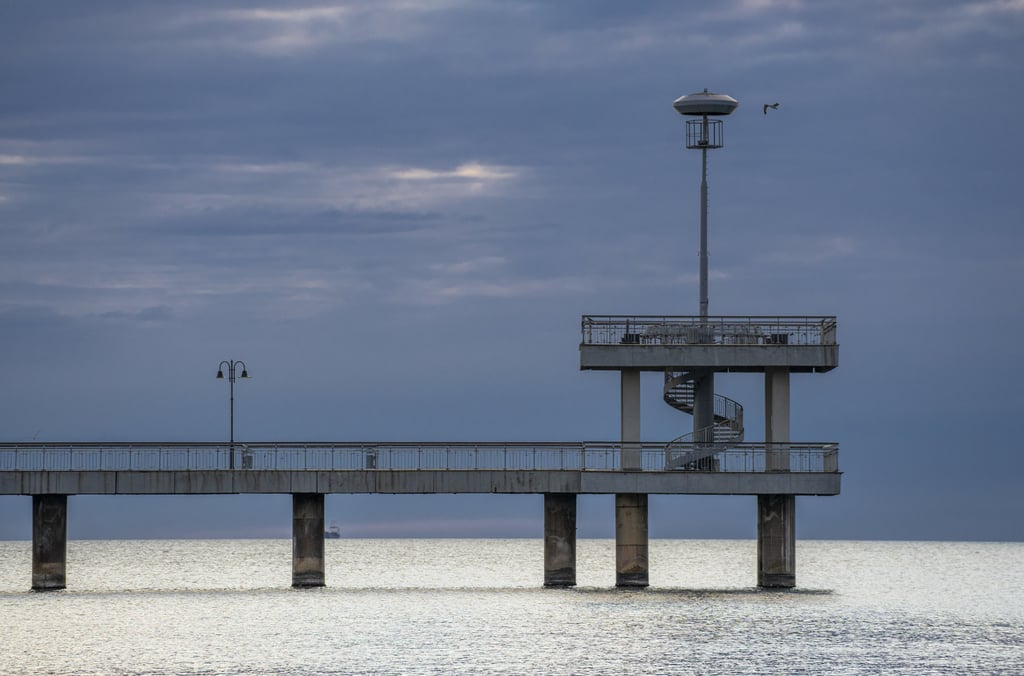Seawall Maintenance Tips Fort Lauderdale | Extend Lifespan
Learn seawall maintenance tips Fort Lauderdale to protect your property. Get seasonal care, inspections, and DIY vs professional advice. Act now!
SEAWALL INSPECTION
10/31/20254 min read


Seawall Maintenance Tips to Prolong Lifespan in South Florida
Seawalls maintenance is essential for protecting South Florida waterfront properties from erosion, storms, and tidal flooding. Even well-built walls can deteriorate over time due to water, vegetation, or soil movement.
Proper maintenance helps prevent costly repairs, preserves property value, and ensures the seawall continues to function effectively.
In this guide, we’ll share seawall maintenance tips Fort Lauderdale homeowners can follow, including routine inspections, seasonal care, and when to hire a professional sea wall contractor or builder.
Why Seawall Maintenance Matters
A well-maintained seawall prevents erosion, protects your property, and reduces the need for emergency repairs. Water, weather, and vegetation can gradually compromise a seawall’s structure, leading to cracks, bulges, and water infiltration. Ignoring minor issues can escalate into major damage, potentially requiring a complete rebuild. Regular maintenance not only extends the lifespan of your seawall but also preserves the aesthetic appeal of your property, increasing its market value.
Routine Inspections: The First Step
One of the most effective seawall maintenance tips Fort Lauderdale property owners can follow is conducting routine inspections. Ideally, inspections should occur at least twice a year—once before the hurricane season and once after. During inspections, look for:
Cracks or fissures along the wall
Signs of erosion or soil settling behind the wall
Bulging or leaning sections
Deterioration around weep holes
Routine inspections help you identify small issues before they become expensive repairs. Documenting your findings also assists professionals if you need a sea wall contractor or builder to intervene.
Weep Hole Cleaning
Weep holes allow water trapped behind the seawall to drain, preventing hydrostatic pressure that can cause the wall to bow or crack. Over time, sand, debris, and vegetation can block these holes. Regular weep hole cleaning is essential. Use a flexible rod or a water jet to clear blockages, ensuring water flows freely. Neglecting this task can accelerate structural damage, making it one of the most important seawall maintenance tips Fort Lauderdale homeowners should follow.
Vegetation Removal
Plants and roots growing along or behind a seawall can compromise its structural integrity. Vegetation removal is a simple yet critical maintenance task. Remove invasive plants, weeds, and grasses, being careful not to disturb the walls backfill or foundation. Regular trimming prevents roots from infiltrating cracks or causing wall displacement. For larger plant growth, consult a professional to avoid accidental damage.
Backfill Checks
The soil behind your seawall, known as backfill, supports the structure. Over time, water erosion or settling can cause voids, weakening the wall. Conduct backfills checks during routine inspections to ensure the soil is compact and stable. Adding sand or gravel where necessary can restore support. Sea wall contractors often recommend periodic backfill evaluation as a preventive measure, especially after storms or high tides.
Protective Coatings
Applying protective coatings to your seawall can significantly enhance its lifespan. Concrete walls benefit from sealants, while wooden or metal walls may require water-resistant treatments. These coatings help prevent water intrusion, chemical damage from saltwater, and UV degradation. Protective coatings should be applied according to the manufacturer’s guidelines, typically every few years depending on environmental exposure.
Seasonal Maintenance
South Florida’s climate demands seasonal maintenance for seawalls. Key tasks include:
Inspecting after hurricane season for storm damage
Clearing debris and sediment after heavy rains
Adjusting backfill and reinforcing vulnerable sections before winter storms
Checking protective coatings and reapplying if necessary
Following a seasonal maintenance schedule minimizes risks and reduces long-term repair costs.
Professional Service vs DIY
While some seawall maintenance can be done by property owners, certain tasks are better left to professionals. DIY maintenance, like clearing debris, weep hole cleaning, and minor vegetation removal, is manageable with proper care. However, for structural repairs, backfill reinforcement, or applying protective coatings on large walls, hiring a professional sea wall contractor ensures safety and quality. Professional seawall builders bring expertise, tools, and materials necessary for effective long-term maintenance.
Choosing the Right Sea Wall Contractor
Selecting the right contractor is crucial for maintaining your seawall. Look for a licensed and insured professional experienced in seawall construction and repairs. A reputable seawall builder can provide:
Thorough inspections and maintenance recommendations
Structural assessments and backfill solutions
Installation of protective coatings or new sections
Guidance on seasonal and routine care
Always verify references, check previous project photos, and ensure the contractor uses materials suitable for South Florida’s coastal conditions.
Signs Your Seawall Needs Immediate Attention
Recognizing when professional intervention is required can prevent costly repairs:
Large cracks or vertical separations
Bulging or leaning sections of the wall
Erosion or sinkholes behind the wall
Persistent water pooling near your property
If you notice any of these signs during routine inspections, contact a seawall contractor immediately. Delaying repairs can compromise the structural integrity of your seawall and threaten your property.
Long-Term Benefits of Proper Maintenance
By implementing seawall maintenance tips Fort Lauderdale homeowners rely on, you gain several benefits:
Extended lifespan of your seawall
Reduced emergency repair costs
Enhanced property value and curb appeal
Protection from erosion, storms, and flooding
Peace of mind knowing your waterfront investment is secure
Regular care and professional guidance combine to protect both your property and the environment around it.
Final Thoughts
Seawall maintenance is an ongoing responsibility for waterfront property owners in South Florida. By prioritizing routine inspections, weep hole cleaning, vegetation removal, backfill checks, protective coatings, and seasonal care, you can extend the lifespan of your seawall and avoid costly repairs. Whether you handle some tasks yourself or hire professional seawall builders, the key is consistency and proactive care. Protect your property today by implementing these essential maintenance practices.
FAQ’s
1. How often should I inspect my seawall?
Routine inspections should be done at least twice a year, ideally before and after hurricane season, to identify any damage early.
2. Can I perform seawall maintenance myself?
Minor tasks like clearing debris, weep hole cleaning, and vegetation removal can be done DIY, but structural repairs should be handled by professionals.
3. Why is backfill important for seawall stability?
Backfill supports the seawall and prevents bowing or collapse. Erosion or voids behind the wall can weaken it, so regular checks are essential.
4. When should I hire a professional sea wall contractor?
If you notice cracks, bulging, erosion, or require protective coating application, a professional seawall builder is recommended for safety and quality.
5. How do protective coatings help my seawall?
Protective coatings prevent water intrusion, UV damage, and chemical erosion, helping to maintain the wall’s structural integrity and extending its lifespan.
Search
Is your seawall secure?
Don't wait for a small problem to become a disaster. Get a professional evaluation.
Innovation
Renovating seawalls with modern technology and materials.
Quality
Strength
© 2024. All rights reserved.
